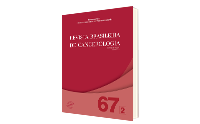Phase Angle and Nutritional Status of Children in Antineoplastic Treatment
DOI:
https://doi.org/10.32635/2176-9745.RBC.2021v67n2.1234Keywords:
Neoplasms/drug therapy, Body Composition, Electric Impedance/therapeutic use, Nutritional Status, ChildAbstract
Introduction: Child cancer has a major impact on public health. The evaluation of body composition by bioelectric impedance provides the values of phase angle, causally related to functional changes in the cell membrane which have been used to evaluate nutritional status and prognosis. Objective: To evaluate the correlation between phase angle and parameters of the nutritional status of pediatric oncologic patients under treatment. Method: Cross-sectional study performed in a public university hospital. The nutritional status was evaluated by weight, height, arm circumference, triceps skin fold, body mass index and arm muscle circumference. The phase angle was determined by bioelectric impedance. Results: 13 patients were included with a mean age of 103.2±39.7 months, 61.5% males with prevalence of leukemia in the diagnoses. It was found that most (53.8%) of the patients were eutrophic. There was a strong correlation of the phase angle with the parameters of lean mass (r=0.923; p=0.000), cellular body mass (r=0.911; p=0.000), extracellular mass (r=0.897; p=0.000) and body weight (r=0.920; p=0.000). Conclusion: Expressive associations between phase angle and other anthropometric indicators were observed, reinforcing the hypothesis that it can anticipate the identification of changes in body composition, allowing early nutritional intervention and better prognosis.









